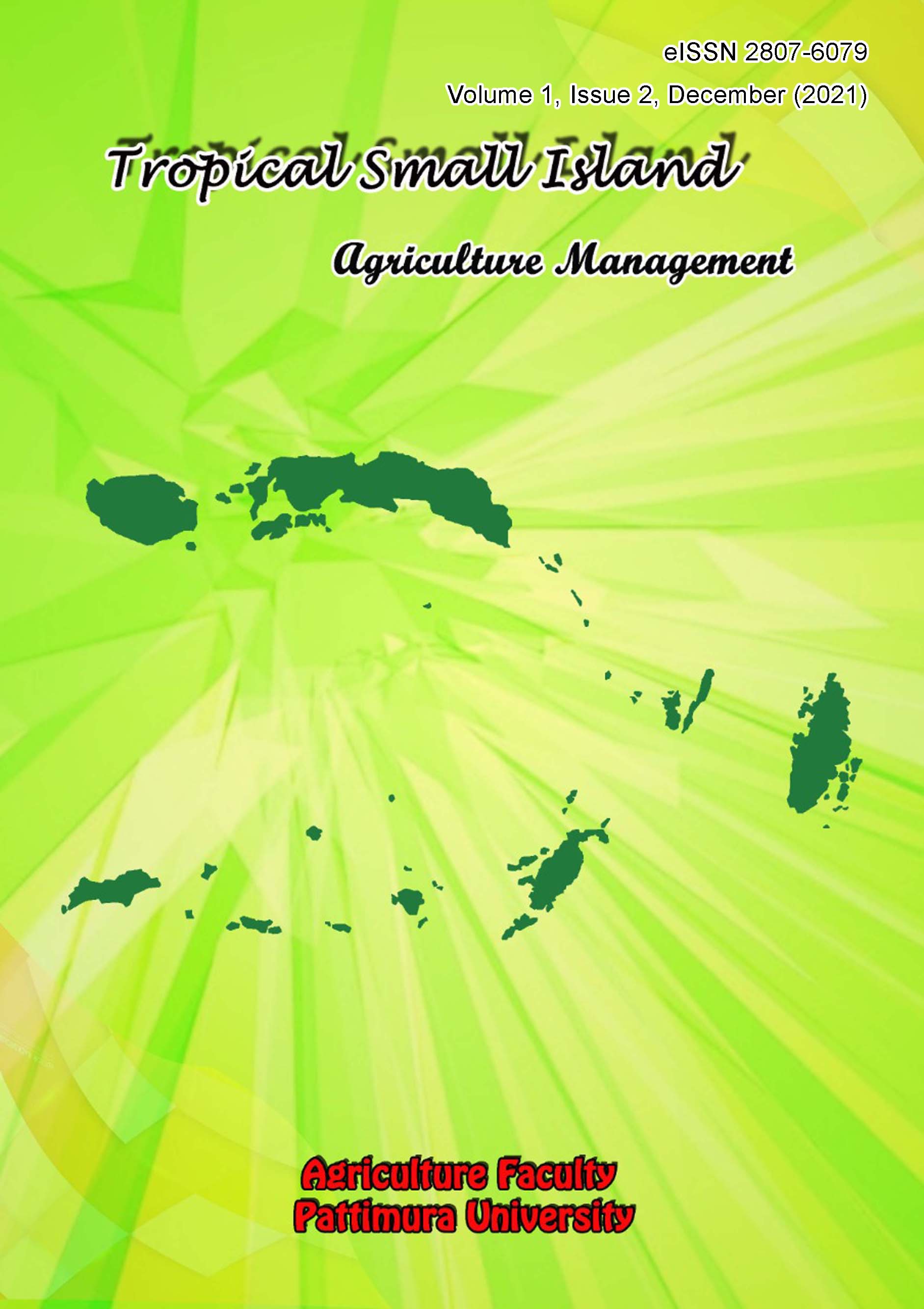Karakteristik Kimia Dan Organoleptik Kerupuk Ubi Jalar Ungu (Ipomoea batatas L.) Dengan Penambahan Tepung Ikan Teri (Stolephorus sp.)
Chemical and Sensory Characteristics of Purple Sweet Potato (Ipomoea batatas L.) Crackers with the Addition of Anchovy (Stolephorus sp) Flour
Abstract
This study aimed to find the best treatment for purple sweet potato crackers with anchovy (Stolephorus sp) flour. In this study, a single-factor completely randomized experimental design (CRD) was used. The treatment levels were as follows: P0 (control), P1 (5%), P2 (10%), and P3 (15%), which were repeated three times with three replicates of analysis. Moisture content, ash content, fat content, protein content, and carbohydrate content were all measured. The observed sensory parameters, namely taste, color, aroma, and crispness, were descriptively analyzed. The addition of anchovy flour had a very significant effect on the chemical and sensory characteristics, according to the results. P3 treatment (30 percent anchovy addition) provided the best treatment, with a moisture content of 7.91 percent, ash 4.87 percent, fat 14.74 percent, protein 7.64 percent, and carbohydrates 62.40 percent, and a level of preference for taste (3.1), scent (3.1), and crispness (3).
Downloads
References
Aryati, E.E. & Dharmaryanti, A.W.S (2014). Manfaat ikan teri nasi segar (Stolephorus sp.) terhadap pertumbuhan tulang dan gigi. ODONTO: Dental Journal, 1(2), 52.
Augustyn, G. H., H. Hetharie, S.H. Raharjo, & M. Pesireron. 2014. Karakteristik Pangan Olahan Berbahan Dasar Ubi jalar Lokal. In Prosiding Seminar Hasil Penelitian Tanaman Aneka Kacang Dan Umbi (P. 837).
Ngana, D.R.N., & Henggu, K.U. (2023). Profil kimia produk ikan teri asin di Kecamatan Haharu. Jurnal Pengolahan Perikanan Tropis, 1(1), 004-006.
Henra, H., Yusuf, N., & Naiu, A.S. (2020). Karakteristik mutu hedonik kerupuk ubi jalar dan rumput laut (Kappaphycus alvarezii) yang difortifikasi dengan ikan layang (Decapterus russelli). Jambura Fish Processing Journal, 1(2), 91-98.
Irwansyah, Hanum, Z., & Fitri, C.A. (2023). Analisis protein dan pH kerupuk daging sapi dengan penambahan ekstrak daun kelor. Jurnal Ilmiah Mahasiswa Pertanian, 8(3).
Lestari, S. & Muharfizi. (2015). Karakterisasi fisikokimia kerupuk melinjo sebagai upaya diversifikasi produk olahan melinjo. Prosiding Seminar Nasional Masy Biodiversifikasi Indonesia, 1(1), 131-135.
Lilik, V.A.B. (2019). Aplikasi Tepung Sagu (Metroxylon rumphii Mart.) Sebagai Bahan Pengikat dalam Pembuatan Kerupuk Ikan Gabus (Channa striata). Disertasi. Semarang: Sekolah Pascasarjana, Universitas Katolik Soegijapranata.
Mervina, Kusharto, C.M. & Marliyati, S.A. (2012). Formulasi biskuit dengan subtitusi tepung ikan lele dumbo (Clarias gariepinus) dan isolat protein kedelai (Glycine max) sebagai makanan potensial untuk anak balita gizi kurang. Jurnal Teknologi dan Industri Pangan, 23(1), 9-16.
Moniharapon, A. (2018). Karakteristik kimia dan organoleptik kerupuk ubi jalar (Ipomoea batatas L.) dengan subtitusi daging ikan lemadang (Coryphaena sp.). Jurnal Penelitian Teknologi Industri, 10(1), 37-44.
Murniyati, A.S. & Sunarman. 2000. Pendinginan, Pembekuan dan Pengawetan Ikan. Kanisius. Yogyakarta. 220 Halaman.
Nofliyanto, L., Harmain, R.M., & Yusuf, N. (2014). Formulasi kerupuk ikan gabus yang disubstitusi dengan tepung sagu. Jurnal Ilmiah Perikanan dan Kelautan, 2(2), 81-87.
Nur, A.A.K., Devi, M., & Hidayati, L. (2017). Pengaruh penambahan Pegagan (Centela asiatica (L.) Urban) terhadap daya terima dan mutu kerupuk. Jurnal Aplikasi Teknologi Pangan, 6(1).
Saputra, R., Widiastuti, I., & Nopianti, R. (2016). Karakteristik fisiko-kimia dan sensori kerupuk pangsit dengan kombinasi tepung ikan motan (Thynnichthys thynnoides). Jurnal fishtech, 5(2), 167-177.
Zulfahmi, N., Swastawati, F., & Romadhon. (2014). Pemanfaatan daging ikan tenggiri (Scomberomorus commersoni) dengan konsentrasi yang berbeda pada pembuatan kerupuk ikan. Jurnal Pengolahan dan Bioteknologi Hasil Perikanan, 3(4), 133-139.
Copyright (c) 2023 The Author(s)

This work is licensed under a Creative Commons Attribution-ShareAlike 4.0 International License.
Authors who publish with this journal agree to the following terms:
- Authors retain copyright and grant the journal right of first publication with the work simultaneously licensed under a Creative Commons Attribution License that allows others to share the work with an acknowledgment of the work's authorship and initial publication in this journal.
- Authors are able to enter into separate, additional contractual arrangements for the non-exclusive distribution of the journal's published version of the work (e.g., post it to an institutional repository or publish it in a book), with an acknowledgment of its initial publication in this journal.
- Authors are permitted and encouraged to post their work online (e.g., in institutional repositories or on their website) prior to and during the submission process, as it can lead to productive exchanges, as well as earlier and greater citation of published work (See The Effect of Open Access).









